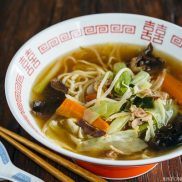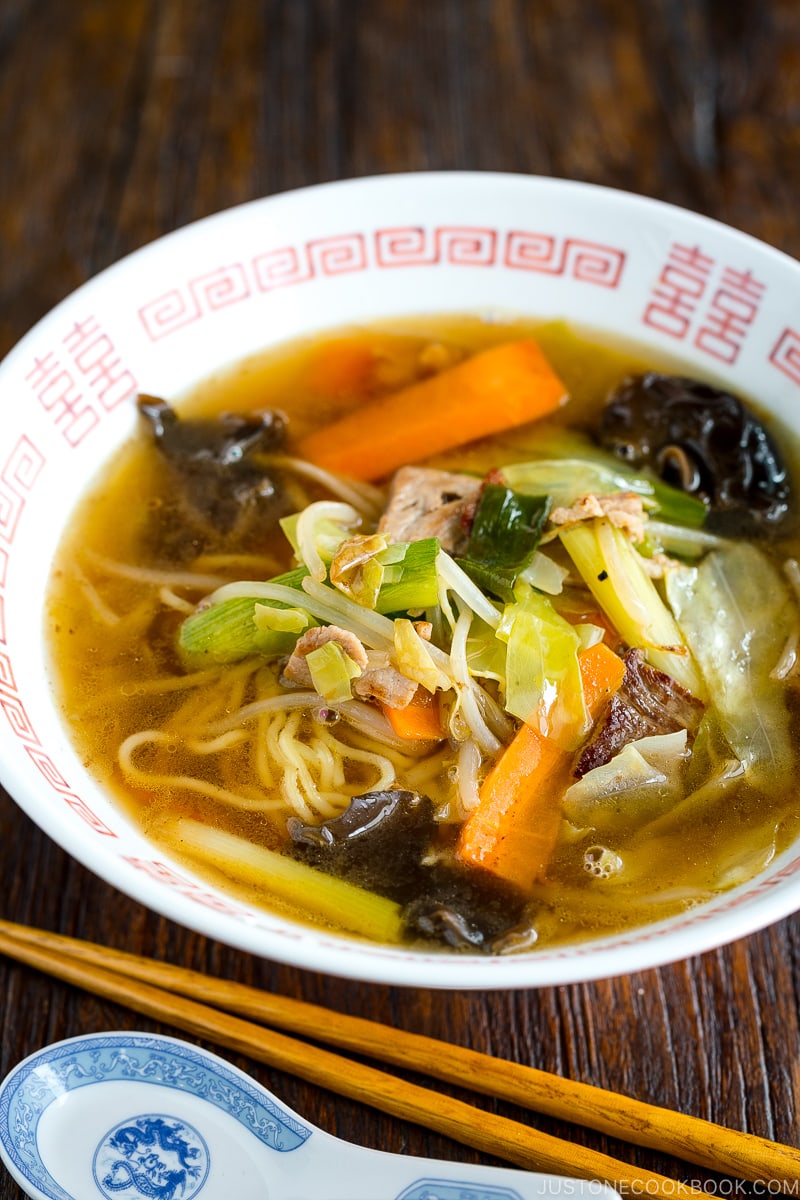
Tan-men (タンメン) is ramen soup noodles with stir-fried pork and vegetables, and it’s one of the quickest ramen recipes you can make easily at home! Inspired by the Japanese drama Midnight Diner.

When I am too busy, tan-men is one of the quick ramen menus I serve at home. You have hearty yet light soup and chewy noodles with some vegetables and meat. Compared to heavy ramen broth, tan-men is light and easy on your tummy. Tan-men or sometimes known as Tan Tan Ramen was featured on the popular Japanese TV program called “Shinya Shokudo (深夜食堂)” or “Midnight Diner: Tokyo Stories” which is now available on Netflix.
Midnight Diner features Japanese dishes that are more representative of home-cooked recipes than Japanese restaurant menus in the US. If you’re interested in Japanese home-cooked meals, you will enjoy this show as much as I do!
Tan-Men episode is Season 1, Episode 1 on Netflix.
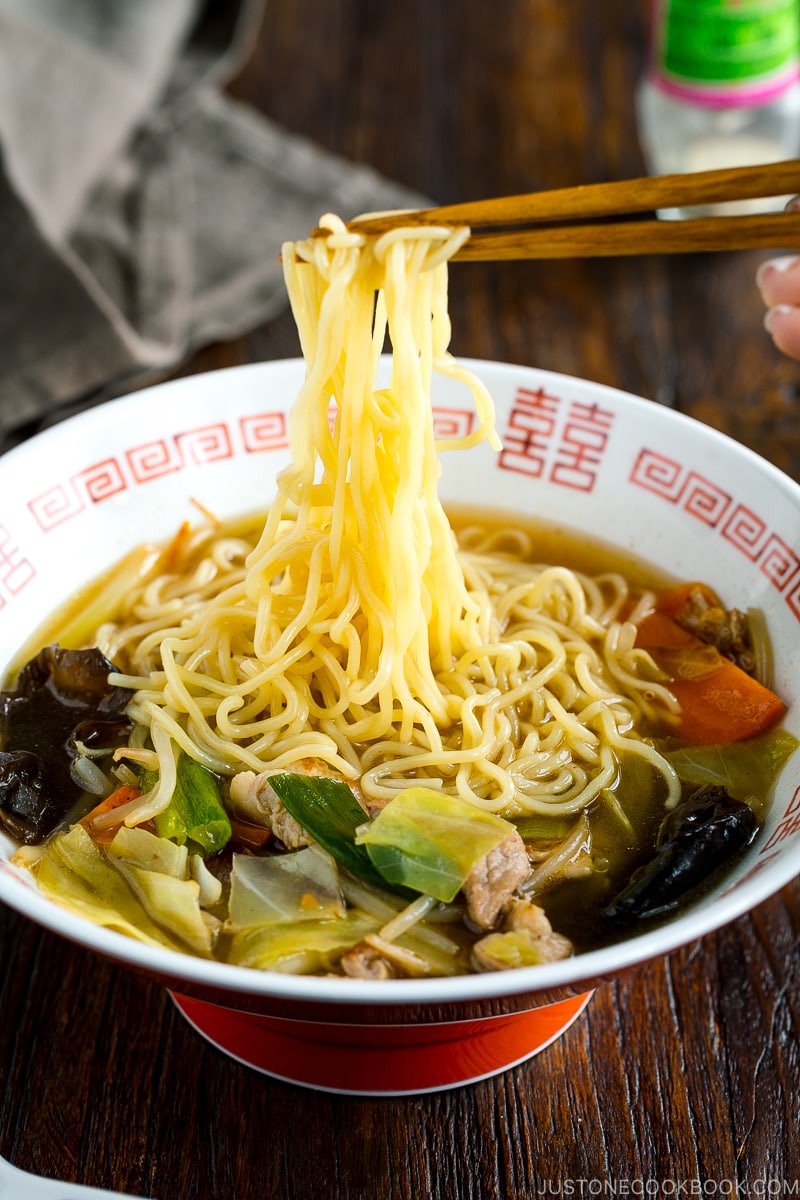
Fun Fact: It’s actually not common to make chicken stock from scratch in Japan because it’s not easy to find chicken bones or whole chicken at local Japanese grocery stores. Therefore the Japanese use the Chuka Dashi Powder (中華だし) to make Asian (especially Chinese) cooking. Do you know what this is?
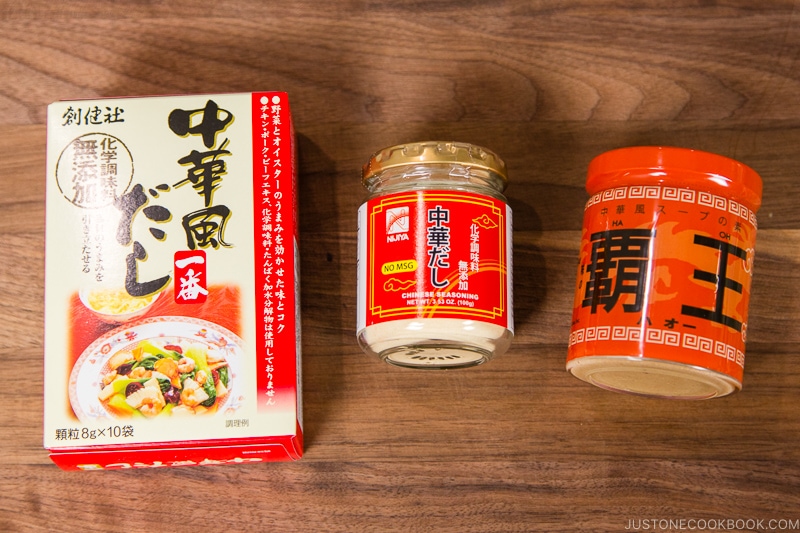
While Japanese dashi is typically made of kombu, bonito flakes, and/or anchovies (read this detailed post about dashi), Chuka (meaning “Chinese” in Japanese) Dashi is basically the soup (湯) that is made with chicken, pork, and/or oyster or clams, for making the soups or the sauces in Chinese cooking.
Just like Japanese dashi powder, you need to dissolve chuka dashi powder in hot water to make the soup stock. This seasoning is sometimes sprinkled over stir fry dishes to give some additional flavor.
In case you’re wondering, dashi powder in Japan is mostly MSG-free.
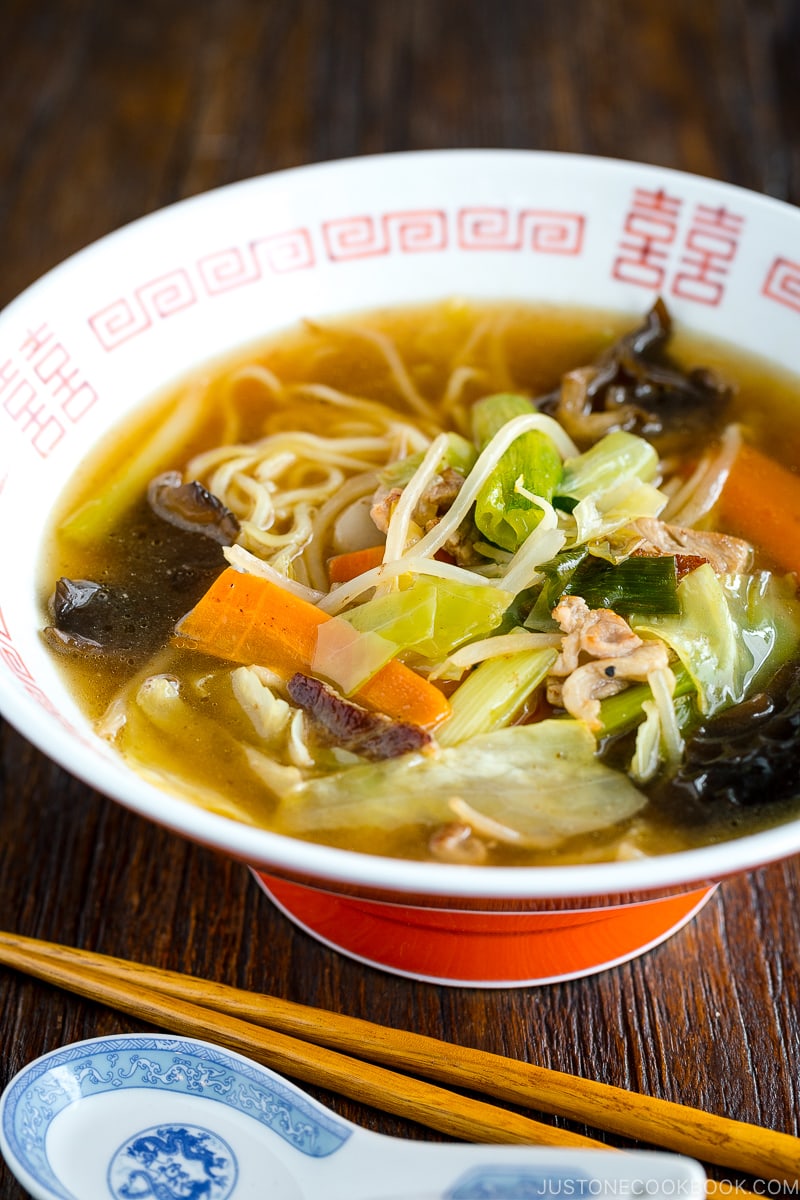
Recommendation: When you make Asian food with chicken stock, I highly recommend using chicken stock made with simple chicken, ginger, and green onion (and garlic), and not western chicken stock made with carrots, onions, or other vegetables in it. As you can imagine, the chicken stocks taste very different.
You can purchase a can of chicken stock like these in Asian grocery stores.
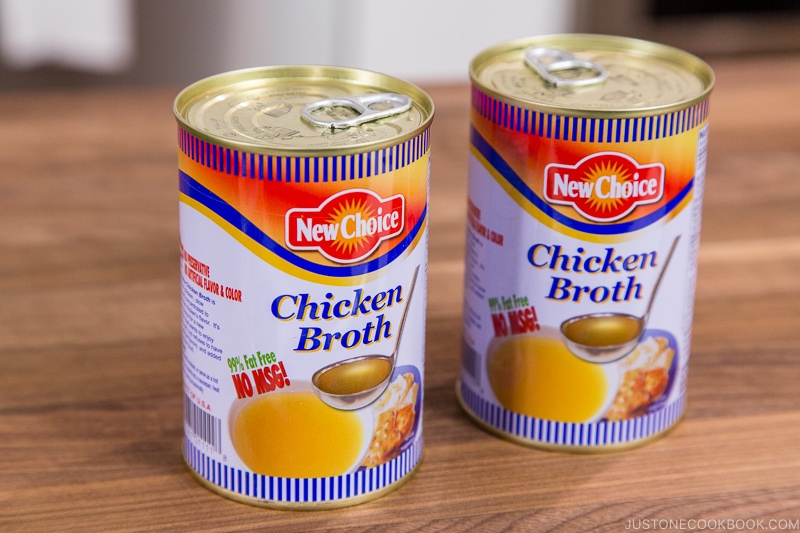
However, I know many of you prefer making stock from scratch, so here’s a quick tutorial on how to make Homemade Chicken Stock.

Meat: Usually sliced pork belly is used in Tan-Men. You can find these sliced pork belly in Japanese, Korean, or Chinese grocery stores. They look like bacon but they are raw and not cured. You can substitute it with other kinds of meat.
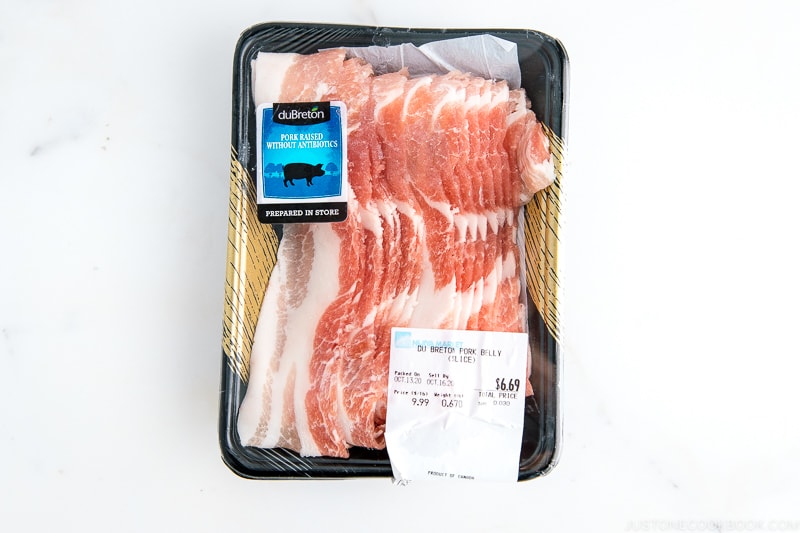
Vegetables/Mushrooms: Typically these five ingredients are used. Cabbage, carrot, bean sprout, green onion, and dried wood ear mushrooms. Dried wood ear mushrooms are often found in Chinese dishes, and it is mainly added for the texture. It comes in a big package so you could omit it if you don’t plan to use it for other recipes. But it’s a fun ingredient to experiment with and makes the dish more authentic.
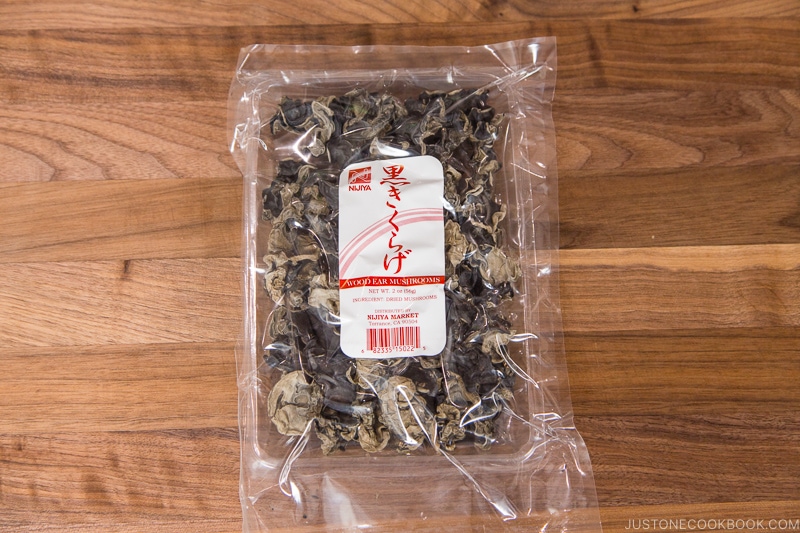
Noodles: I used noodles from Tan-Men package I purchased at my local Japanese grocery store. You can use ramen noodles or Chinese-style noodles.
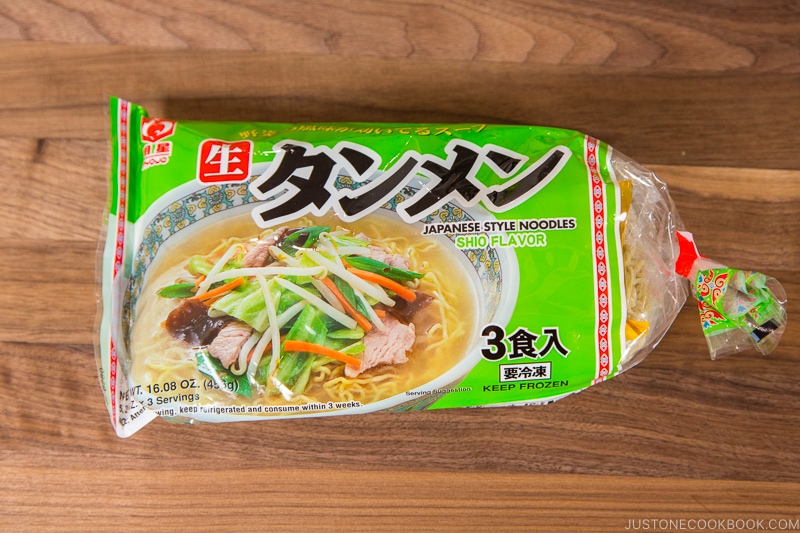
In the Tan-Men episode of the Midnight Diner series, some customers ask the master (the chef at the diner) to make Tan-Men without noodles because they are eating at late night. Tan-Men has lots of vegetables in the soup and it’s quite fulfilling. But I have no willpower to eat Tan-Men without noodles. How about you?
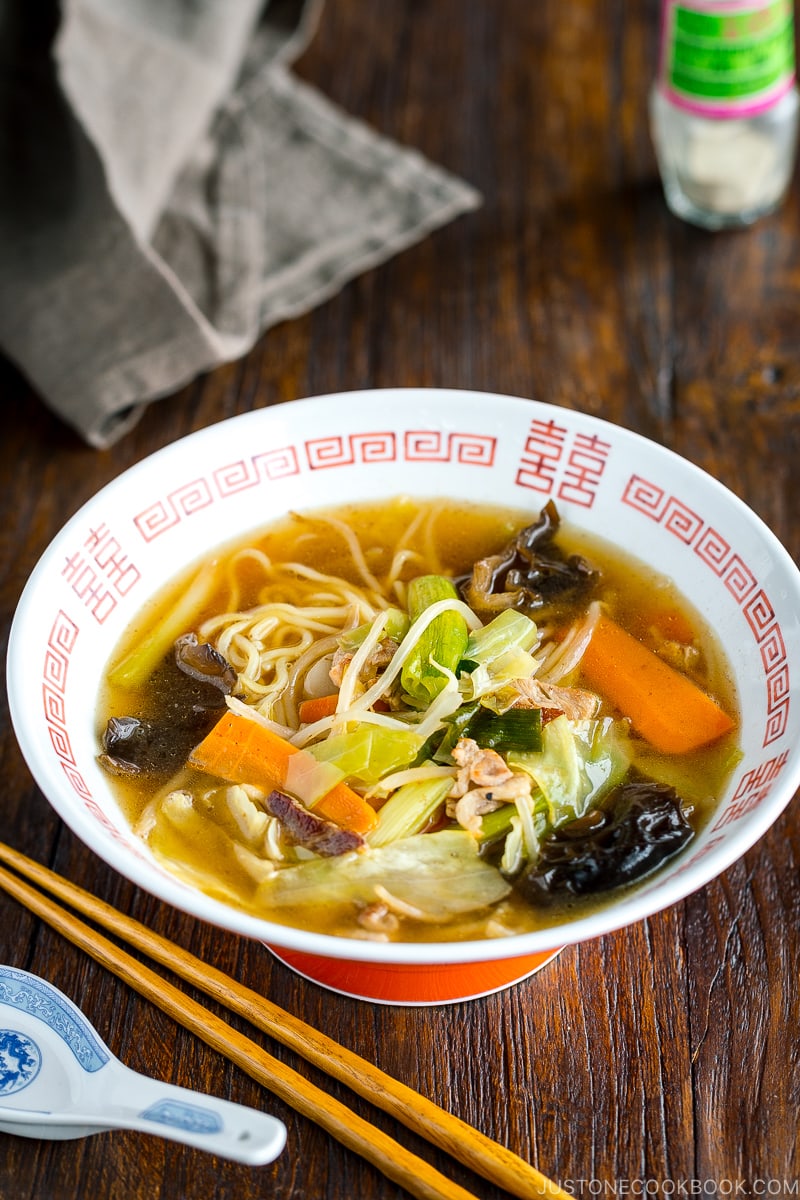
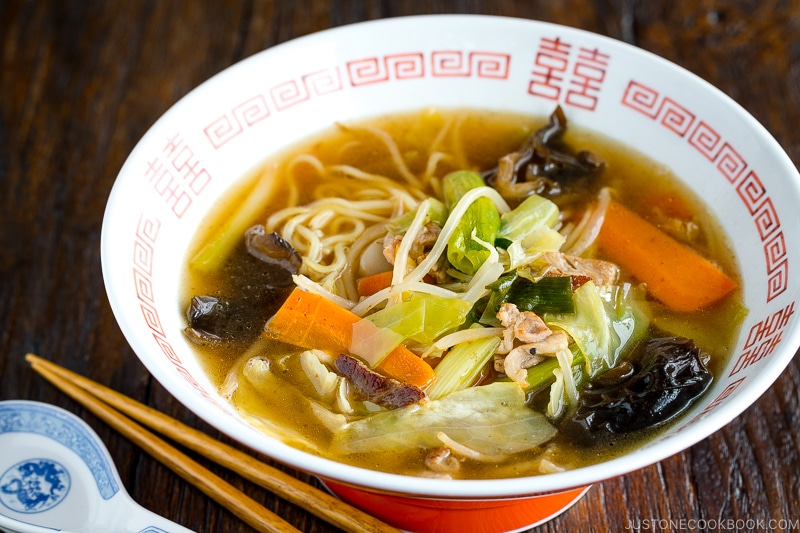
Wish to learn more about Japanese cooking? Sign up for our free newsletter to receive cooking tips & recipe updates! And stay in touch with me on Facebook, Pinterest, YouTube, and Instagram.
